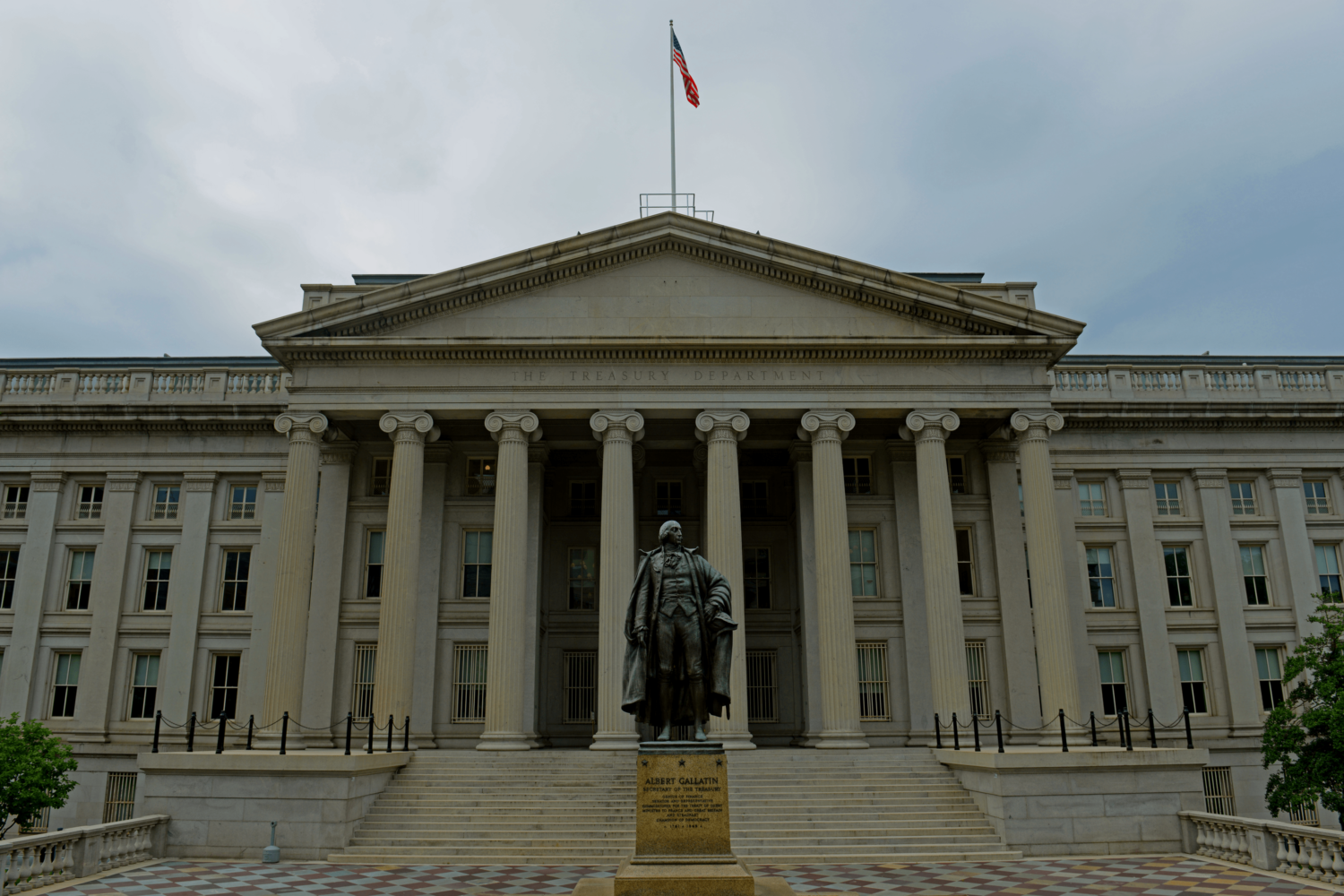On November 1st, 2021, the President’s Working Group on Financial Markets (PWG) released a report analyzing the benefits and risks of stablecoins. To put this report into context, Chainalysis’ Head of Public Policy Salman Banaei led a two-part discussion with U.S. Treasury official Matt Swinehart and two members of Congress—Jim Himes (D) (CT-4) and Tom Emmer (R) (MN-6).
Below we summarize the key takeaways. But before that, let’s review: what is a stablecoin?
Stablecoins explained
A stablecoin is a type of cryptocurrency that is pegged to an outside asset, often a fiat currency like the U.S. dollar, to stabilize the price. To do so, the entity behind a stablecoin sets up a “reserve” where it stores the assets backing the stablecoin. These reserves are generally a combination of bank deposits, cash, and low-risk investments like Treasury bills.
Collectively, stablecoins have higher transaction volumes than both Bitcoin and Ethereum. The two largest stablecoins, Tether and USD Coin, have a circulating supply of more than $130 billion.
To learn more about stablecoins’ functions, read our analysis of the cryptocurrency ecosystem.
The Treasury’s perspective on stablecoin regulation
In part one of the discussion, Matt Swinehart, Acting Deputy Assistant Secretary of the Treasury for International Financial Markets, provided an overview of the stablecoin landscape, its risks, and PWG’s recommended response.
The use-cases of stablecoins
The report discussed the uses of stablecoins under two headers:
- Digital asset trading. “Stablecoins today are primarily used to facilitate the trading, lending, and borrowing of other digital assets.” Many crypto exchanges and DeFi protocols utilize stablecoins, rather than integrations with traditional banks, to support trading.
- Payments. Proponents believe that stablecoins could become widely used by households and businesses as a means of payment and cross-border remittances. Compared to existing modes of such payments, stablecoins offer faster and cheaper transactions with less exchange rate risks.
“The United States strongly supports responsible innovation,” Swinehart explained. “If well designed and appropriately regulated, stablecoins could contribute to important payment system objectives, like efficiency, resiliency, and inclusion.” But there are, of course, risks.
Stablecoin risks
The report went on to describe several customer protection and market integrity concerns associated with stablecoins:
- Fraud, misappropriation, and conflicts of interest. These could arise due to misleading market disclosures, abuses of inside information, and manipulative trading practices.
- The interdependency of stablecoin arrangements and digital asset trading platforms. If these interdependencies are large enough in scale, the disruption on one could cause the other to fail.
- A lack of governance, interoperability, scalability, and cybersecurity.
- Money laundering and terrorist financing.
Legislative recommendations
To allay these concerns, the report recommends that Congress enact legislation that would:
- Require stablecoin issuers to be insured depository institutions;
- Require custodial wallet providers to be subject to additional federal oversight; and
- Address additional concerns about systemic risk and concentration of economic power
The Congressional perspective on stablecoin regulation
In part two of the discussion, representatives Jim Himes (D) (CT-4) and Tom Emmer (R) (MN-6) shared their reactions to the report and their attitudes toward cryptocurrency regulation more generally.
The question of stablecoin regulation
In the representatives’ view, there are at least two essential questions for Congress to answer about stablecoins:
- Are stablecoin issuers systemically important?
At a $150 billion stablecoin market cap, “I don’t think we’re there yet,” Himes said. And even once stablecoin issuers become systemically important, there remains disagreement about who should regulate them—and how.
In one such case, representatives Himes and Emmer disagreed about whether the Financial Stability Oversight Council (FSOC) was the appropriate agency to regulate stablecoin issuers. “In my opinion,” Emmer said, “because [FSOC] is completely unaccountable to congressional oversight, and is made up of anti-crypto regulators, I just don’t think that’s the right approach.” Himes, on the other hand, argued that FSOC’s work on systemically important institutions in 2008 and 2009 helped prevent the financial crisis from deepening, demonstrating FSOC’s efficacy.
- Should stablecoin issuers be treated like banks?
“I don’t start from the proposition that we should require all stable coin issuers to be depository institutions,” Himes explained. “I’m really interested in the question of, can we let small, entrepreneurial, innovative stablecoins thrive, but then, once they cross a certain threshold … make them subject to more regulation?”
On this point, Tom Emmer agreed. If the government treats stablecoin issuers like banks, with the necessary bank charter and FDIC insurance, “this will kill innovation and make stablecoin issuance accessible to only the biggest companies in the industry.”
This was one of the more noteworthy exchanges of the event: the fact that the PWG’s central recommendation, to regulate stablecoin issuers as depository institutions, does not appear to have much traction on Capitol Hill—or at least, not with these Congressmen.
The congressional center of gravity
On cryptocurrency generally, representative Himes described the Congressional center of gravity as landing somewhere between excitement and skepticism. “The blockchain, in particular, is super intriguing as a way of disintermediating an almost medieval way of doing things around titles, contracts, and ownership,” Himes said. Representative Emmer felt similarly, and expressed his hope that Congress will craft a regulatory environment that encourages innovation and consumer choice.
Why? Because according to Emmer, “decentralized financial tools like cryptocurrencies will give Americans more opportunities than the intermediated system ever could.”
